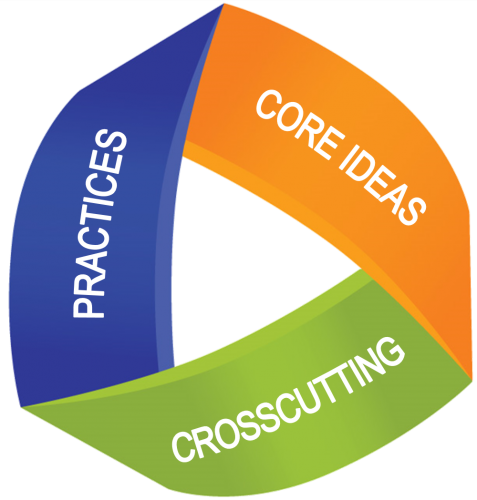The trees in our communities provide many benefits: they improve air quality, store carbon, and conserve energy. Trees also enhance human health by reducing blood pressure, decreasing stress, and elevating attentiveness. In this activity, students conduct a survey to investigate the social and psychological effects of the urban forest.
To get this activity, purchase it from Shop.PLT.org as part of the Discover Your Urban Forest activity collection and/or find out about professional development opportunities in your state.
Below are some supporting resources for this activity.
STUDENT PAGES 
Download the copyright-free student pages that are included with this activity:
Community Survey - Questions
(PDF)
Community Survey - Responses
(PDF)
Spanish Student Page(s):
Encuesta Comunitaria – Preguntas
(PDF)
Encuesta Comunitaria – Respuestas
(PDF)
ADDITIONAL RESOURCES 
The following tools and resources may be used to enhance the activity.
-
Why Cities Need Trees
Why Cities Need Trees is a 5:26-minute video that illustrates how trees are an essential part of successful cities. It tells the tale of two ancient cities and the trees that determined their destinies, and the importance of trees in modern-day cities–from helping to protect a city’s infrastructure to improving the health of its residents.
Resource for Discover Your Urban Forest and Explore Your Environment activities: Trees in Trouble (Grades 3–5) and Forest in the City (Grades 6-8)
-
Healthy Trees, Healthy Lives
Healthy Trees, Healthy Lives is an interactive poster to learn about the many physical and mental health benefits trees provide in urban areas. Students can also read about how urban forests can improve our physical and mental health and promote healing.
-
Podcast: Keys to Urban Forestry
“Keys to Urban Forestry.” Trees Are Key, Episode 311. The first 10-minute segment of this podcast discusses how trees are key to healthier, happier, and safer communities and how listeners can help to support and care for the urban forest in their communities. Geared for adults, Trees Are Key is a series of over 300 podcasts by Texas A&M Forest Service. See https://tfsweb.tamu.edu/podcasts/treesarekey/ for the full list.
-
Video: The Carbon Cycle and the Forest!
“The Carbon Cycle and the Forest!” This 7:20-minute video explains the carbon cycle’s connection to forests, and describes how managing trees and using wood products can help forests absorb more carbon dioxide. It is one of a series of BeLeaf It or Not! videos by Michigan State University Extension, which are geared for students.
-
NGSS Correlations for “Forest in the City”
 Download “Forest in the City” NGSS Correlations which includes a guiding question, science connections found in the activity, and explicit NGSS correlations. The Next Generation Science Standards (NGSS) define what students should know or be able to do at the end of instruction. This activity provides students opportunities to explore the three dimensions of science to build knowledge and understanding. In addition, activities offer phenomenon-based learning, which involves exploring the real world through learner-centered, multidisciplinary investigations that promote inquiry and problem solving. It is a useful resource even if your state has not adopted NGSS.
Download “Forest in the City” NGSS Correlations which includes a guiding question, science connections found in the activity, and explicit NGSS correlations. The Next Generation Science Standards (NGSS) define what students should know or be able to do at the end of instruction. This activity provides students opportunities to explore the three dimensions of science to build knowledge and understanding. In addition, activities offer phenomenon-based learning, which involves exploring the real world through learner-centered, multidisciplinary investigations that promote inquiry and problem solving. It is a useful resource even if your state has not adopted NGSS.
-
A City in the Forest
How is a forest like a city? This 4-minute video, A City in a Forest from PBS Plum Landing, explores a child’s perspective of a forest and what they see living and growing on trees—from the top of the canopy to their roots in the ground, to dead trees lying on the forest floor. Aligned to several Next Generation Science Standards (NGSS) standards, use this video to teach your students about ecosystems and engage them in conversations about their own community and urban forests. This video is one of many resources offered by PBS Kids through Plum Landing, a multi-platform, indoor-outdoor, science exploration adventure for kids.
-
Environmental Justice – EPA’s Data and Mapping Tool
EJ SCREEN is an environmental justice mapping and screening tool that combines environmental and demographic indicators to provide interesting and important regional data related to public health and environmental quality. By clicking anywhere on the map, users can view an area’s ozone levels, traffic concentrations, lead paint indicators, and more. EJSCREEN can assist in the identification of rural, urban, and suburban areas that are the most at-risk and it allows users to find correlations between the socioeconomic background of the region and the prevalence of environmental hazards.


 Download
Download 